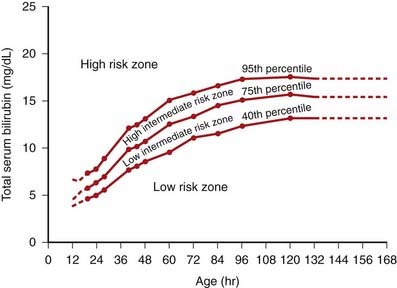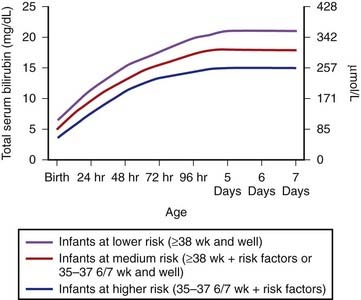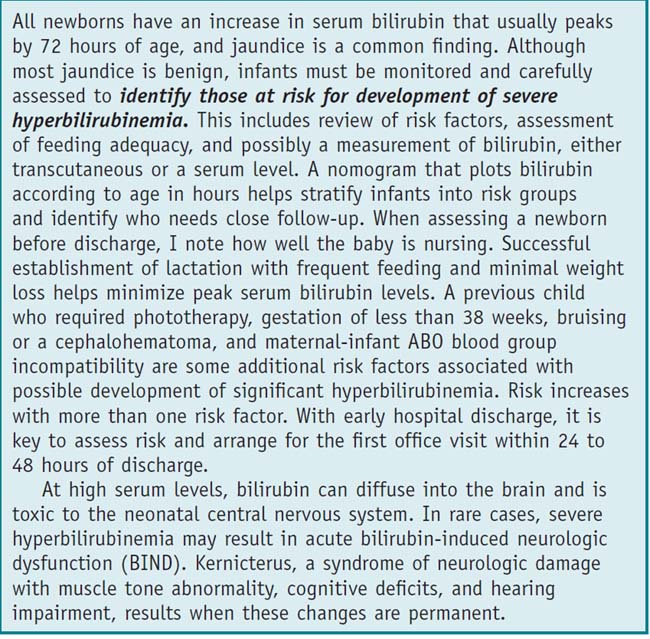Chapter 60 Jaundice (Case 23)
Patient Care
Clinical Thinking

Figure 60-1 Risk designation of term and near-term well newborns based on their hour-specific bilirubin values.
(Reproduced with permission from Bhutani VK, Johnson L, Sivieri EM: Predictive ability of a predischarge hour-specific bilirubin for subsequent significant hyperbilirubinemia in healthy term and near-term newborns. Pediatrics, 103:6-14, 1999, Fig. 2, Copyright © 1999 by the AAP.)

Figure 60-2 Guidelines for phototherapy in hospitalized infants of 35 or more weeks of gestation.
(Reproduced with permission from AAP Clinical Practice Guideline. Subcommittee on Hyperbilirubinemia: Management of hyperbilirubinemia in the newborn infant 35 or more weeks of gestation. Pediatrics 114:297-316, 2004, Fig. 3, Copyright © 2004 by the AAP.)
History
Physical Examination
Tests for Consideration
Stay updated, free articles. Join our Telegram channel

Full access? Get Clinical Tree



